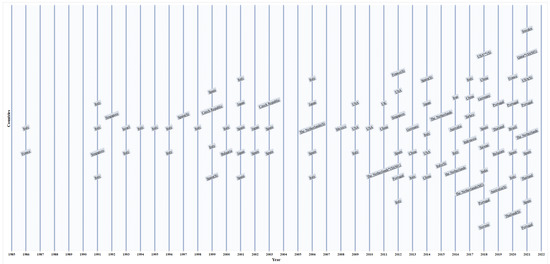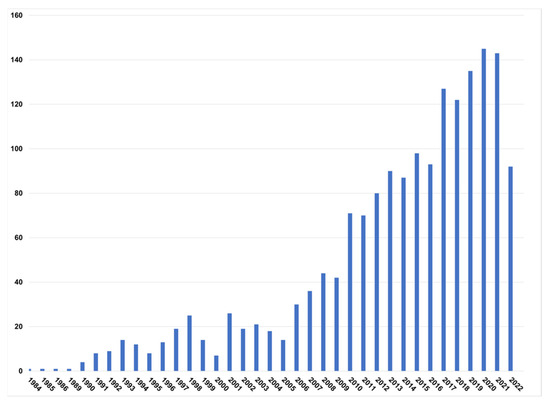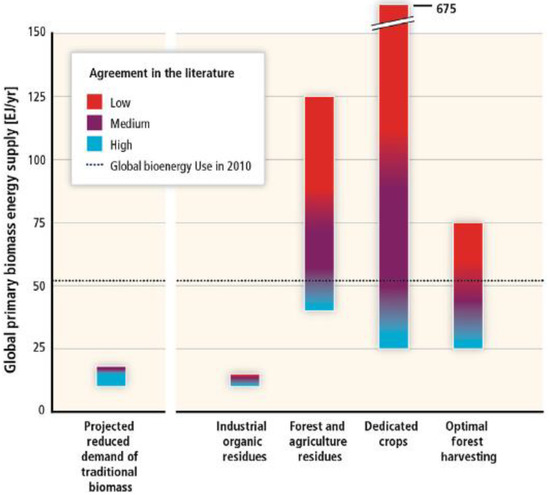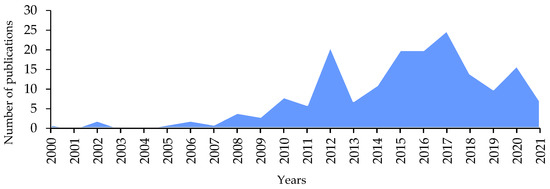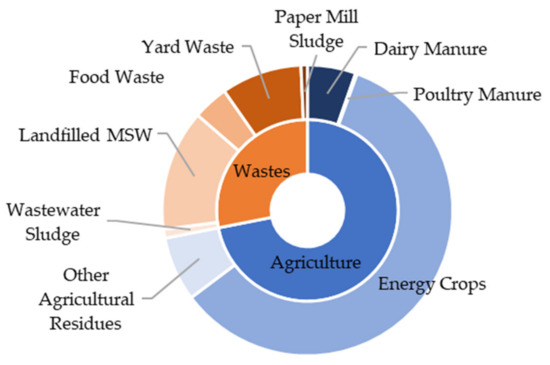Bio-Energy Reviews
A topical collection in Energies (ISSN 1996-1073). This collection belongs to the section "A4: Bio-Energy".
Viewed by 52738
Share This Topical Collection
Editors
 Prof. Dr. Fernando Rubiera González
Prof. Dr. Fernando Rubiera González
 Prof. Dr. Fernando Rubiera González
Prof. Dr. Fernando Rubiera González
E-Mail
Website
Collection Editor
Institute of Carbon Science and Technology, INCAR-CSIC, 26 Francisco Pintado Fe, 33011 Oviedo, Spain
Interests: carbon capture; adsorption; biomass; gasification; combustion; cofiring
Special Issues, Collections and Topics in MDPI journals
Topical Collection Information
Dear Colleagues,
Energy production from renewable sources satisfies the three requirements of accessibility, supply security, and environmental sustainability. It is recognised that bioenergy will be pivotal in any decarbonisation strategy as a sustainable alternative to the energy generated from fossil fuels. As contemplated in the Bio-Energy Section of the journal, the generation of bioenergy from biofuels offers several advantages, particularly those associated with CO2 life-cycle neutrality, in order to reduce the energy production impact on the greenhouse effect and global warming. Likewise, unlike most other renewable energy sources, bioenergy can generate both heat and electricity with a high efficiency in combined heat and power (CHP) plants. This Topical Collection aims at collecting the latest advances in bioenergy research. It welcomes review papers and case studies, related to all aspects of bioenergy production and use, including the treatment of feedstocks, biomass conversion technologies, all the range of biofuels for vehicles, and new trends and latest discoveries in aviation biofuels. For more information, see the scope of the Bio-Energy Section in Energies.
Prof. Dr. Fernando Rubiera González
Dr. Covadonga Pevida García
Collection Editors
Manuscript Submission Information
Manuscripts should be submitted online at www.mdpi.com by registering and logging in to this website. Once you are registered, click here to go to the submission form. Manuscripts can be submitted until the deadline. All submissions that pass pre-check are peer-reviewed. Accepted papers will be published continuously in the journal (as soon as accepted) and will be listed together on the collection website. Research articles, review articles as well as short communications are invited. For planned papers, a title and short abstract (about 250 words) can be sent to the Editorial Office for assessment.
Submitted manuscripts should not have been published previously, nor be under consideration for publication elsewhere (except conference proceedings papers). All manuscripts are thoroughly refereed through a single-blind peer-review process. A guide for authors and other relevant information for submission of manuscripts is available on the Instructions for Authors page. Energies is an international peer-reviewed open access semimonthly journal published by MDPI.
Please visit the Instructions for Authors page before submitting a manuscript.
The Article Processing Charge (APC) for publication in this open access journal is 2600 CHF (Swiss Francs).
Submitted papers should be well formatted and use good English. Authors may use MDPI's
English editing service prior to publication or during author revisions.
Keywords
- lignocellulosic biomass
- microalgae
- biorefinery
- wastewater treatment
- pyrolysis
- gasification
- microwave treatment
- biochar
- catalysis
- BECCS
- bioethanol
- biodiesel
- biohydrogen
- biofuel cells
- anaerobic digestion
- biopolymers
Published Papers (8 papers)
Open AccessReview
Pyrolysis Process, Reactors, Products, and Applications: A Review
by
Prakhar Talwar, Mariana Alzate Agudelo and Sonil Nanda
Cited by 14 | Viewed by 10262
Abstract
With the rapid growth of the global population, increasing per capita energy demands, and waste generation, the need for innovative strategies to mitigate greenhouse gas emissions and effective waste management has become paramount. Pyrolysis, a thermochemical conversion process, facilitates the transformation of diverse
[...] Read more.
With the rapid growth of the global population, increasing per capita energy demands, and waste generation, the need for innovative strategies to mitigate greenhouse gas emissions and effective waste management has become paramount. Pyrolysis, a thermochemical conversion process, facilitates the transformation of diverse biomass feedstocks, including agricultural biomass, forestry waste, and other carbonaceous wastes, into valuable biofuels such as bio-oil, biochar, and producer gas. The article reviews the benefits of pyrolysis as an effective and scalable technique for biofuel production from waste biomass. The review describes the different types of pyrolysis processes, such as slow, intermediate, fast, and catalytic, focusing on the effects of process parameters like temperature, heating rate, and residence time on biofuel yields and properties. The review also highlights the configurations and operating principles of different reactors used for pyrolysis, such as fixed bed, fluidized bed, entrained flow, plasma system, and microwaves. The review examines the factors affecting reactor performance, including energy consumption and feedstock attributes while highlighting the necessity of optimizing these systems to improve sustainability and economic feasibility in pyrolysis processes. The diverse value-added applications of biochar, bio-oil, and producer gas obtained from biomass pyrolysis are also discussed.
Full article
►▼
Show Figures
Open AccessReview
The Biosynthesis of Liquid Fuels and Other Value-Added Products Based on Waste Glycerol—A Comprehensive Review and Bibliometric Analysis
by
Joanna Kazimierowicz, Marcin Dębowski, Marcin Zieliński, Aneta Ignaciuk, Sandra Mlonek and Jordi Cruz Sanchez
Cited by 6 | Viewed by 2978
Abstract
Waste glycerol can be subjected to various processing operations, including purification and refining, to obtain glycerol of an appropriate purity. Alternative methods for utilising waste glycerol are also being sought, e.g., by converting it into other valuable chemical products or biofuels. Therefore, various
[...] Read more.
Waste glycerol can be subjected to various processing operations, including purification and refining, to obtain glycerol of an appropriate purity. Alternative methods for utilising waste glycerol are also being sought, e.g., by converting it into other valuable chemical products or biofuels. Therefore, various technologies are being developed to ensure effective and sustainable utilisation of this type of waste. The production of value-added products from waste glycerol strongly determines the improvement of the economic viability of biofuel production and corresponds to the model of a waste-free and emission-free circular economy. This paper characterises the mechanisms and evaluates the efficiency of existing methods for microbiological utilisation of waste glycerol into liquid biofuels, including biodiesel, bioethanol and biobutanol, and identifies further production avenues of value-added products. In addition, it presents the results of a bibliographical analysis of publications related to the production of liquid fuels and economically valuable products from glycerol, assesses the progress of research and application work and, finally, identifies areas for future research.
Full article
►▼
Show Figures
Open AccessReview
A Critical Review on the Status and Progress of Microalgae Cultivation in Outdoor Photobioreactors Conducted over 35 Years (1986–2021)
by
Nilay Kumar Sarker and Prasad Kaparaju
Cited by 39 | Viewed by 13759
Abstract
Microalgae, a renewable bio-resource, are considered a potential value-added commodity and a tool to combat climate change. Microalgal research has received worldwide attention recently. Different perspectives have been explored, but cultivation in outdoor photobioreactors (PBRs) is still a less explored field. This review
[...] Read more.
Microalgae, a renewable bio-resource, are considered a potential value-added commodity and a tool to combat climate change. Microalgal research has received worldwide attention recently. Different perspectives have been explored, but cultivation in outdoor photobioreactors (PBRs) is still a less explored field. This review summarizes the studies conducted on the microalgae cultivated in outdoor PBRs only. The locations, algal strains, PBRs, and cultivation media used in these studies were identified and tabulated. Different aspects of outdoor algal cultivation in PBRs, such as temperature control, light intensity control, photosynthetic efficiency (PE), the outdoor adaptation of strains, PBR designs, and algal growth and biochemical composition variation from the weather, were studied and reviewed. A brief review of downstream processes and environmental and economic impacts was also conducted. This review summarizes what has been carried out in this field so far and will help researchers to determine what further work needs to be conducted and in which direction to proceed.
Full article
►▼
Show Figures
Open AccessReview
Lignin Gasification: Current and Future Viability
by
Abraham Castro Garcia, Shuo Cheng and Jeffrey S. Cross
Cited by 17 | Viewed by 4722
Abstract
The consumption of fossil fuels is one of the main drivers of climate change. Lignin derived from biomass is a carbon-neutral raw feedstock, and its conversion into fuels is gaining much attention. The gasification of biomass aims to transform heterogeneous feedstocks into syngas
[...] Read more.
The consumption of fossil fuels is one of the main drivers of climate change. Lignin derived from biomass is a carbon-neutral raw feedstock, and its conversion into fuels is gaining much attention. The gasification of biomass aims to transform heterogeneous feedstocks into syngas and heat that could be used for various purposes. Lignin is a biomass feedstock of special interest due to its particular properties and its ability to be obtained in abundant quantities as a side product from the paper pulp industry as well as the growing cellulosic ethanol industry. This review explores the existing works regarding lignin gasification from different perspectives and compares the results obtained with other existing thermochemical processes, in addition to providing a perspective on the long-term fate of gasification as a technology compared to other emerging technologies. The analysis indicates that while lignin gasification may grow in importance in the near future due to increased interest in hydrogen production, its potential in emerging applications indicates that lignin may be too valuable to be used purely for energy generation purposes, and applications that take advantage of its inherent chemical compounds are expected to take priority in the long-term.
Full article
►▼
Show Figures
Open AccessPerspective
Repairing What Policy Is Missing Out on: A Constructive View on Prospects and Preconditions for Sustainable Biobased Economy Options to Mitigate and Adapt to Climate Change
by
André P. C. Faaij
Cited by 9 | Viewed by 3123
Abstract
Biomass use for energy and materials is, on the one hand, one of the key mitigation options to reach the 1.5 °C GMT target set in the Paris Agreement, as highlighted by the IPCC and many other key analyses. On the other hand,
[...] Read more.
Biomass use for energy and materials is, on the one hand, one of the key mitigation options to reach the 1.5 °C GMT target set in the Paris Agreement, as highlighted by the IPCC and many other key analyses. On the other hand, particularly in parts of the EU, a strong negative connotation has emerged in public debate and EC policy, with a particular emphasis on the (presumed) displacement effect in markets and land use. This is a remarkable contrast because the reasons to use sustainable biomass, on the one hand, and the possibilities and synergies for supplying sustainable biomass, on the other, are underpinned with strong evidence, also providing insights on how displacement issues can be avoided. Sustainable biomass supplies can contribute 20–30% of the future global and European energy supply, leading to reduced overall mitigation costs, including realizing the net CO
2 removal from the atmosphere using BECCS concepts. This paper highlights which options, pathways and preconditions are key to achieving such a substantial contribution of sustainable biomass in future (2050) energy and material supply (with a focus on the European setting). By pinpointing how “biomass can be done right” and how important synergies can be achieved via better agricultural methods, the restoration of marginal and degraded lands and the adaptation of climate change, a different policy agenda emerges in sharp contrast to how a biobased economy has been framed in recent years. It is recommended that future policy priorities, particularly at the EU level, take a more integral view on the synergy between the role of biomass in the energy transition, climate adaptation and mitigation, better agriculture and the better use of land in general. Strategies to achieve such positive results typically require an alignment between renewable energy, and agricultural, environmental, mitigation and adaptation policies, which is a largely missing nexus in different policy arenas. Resolving this lack of alignment offers a major opportunity, globally, to contribute to the European Green deal and improve energy security.
Full article
►▼
Show Figures
Open AccessReview
Low Indirect Land Use Change (ILUC) Energy Crops to Bioenergy and Biofuels—A Review
by
Mariana Abreu, Luís Silva, Belina Ribeiro, Alice Ferreira, Luís Alves, Susana M. Paixão, Luísa Gouveia, Patrícia Moura, Florbela Carvalheiro, Luís C. Duarte, Ana Luisa Fernando, Alberto Reis and Francisco Gírio
Cited by 51 | Viewed by 7175
Abstract
Energy crops are dedicated cultures directed for biofuels, electricity, and heat production. Due to their tolerance to contaminated lands, they can alleviate and remediate land pollution by the disposal of toxic elements and polymetallic agents. Moreover, these crops are suitable to be exploited
[...] Read more.
Energy crops are dedicated cultures directed for biofuels, electricity, and heat production. Due to their tolerance to contaminated lands, they can alleviate and remediate land pollution by the disposal of toxic elements and polymetallic agents. Moreover, these crops are suitable to be exploited in marginal soils (e.g., saline), and, therefore, the risk of land-use conflicts due to competition for food, feed, and fuel is reduced, contributing positively to economic growth, and bringing additional revenue to landowners. Therefore, further study and investment in R&D is required to link energy crops to the implementation of biorefineries. The main objective of this study is to present a review of the potential of selected energy crops for bioenergy and biofuels production, when cultivated in marginal/degraded/contaminated (MDC) soils (not competing with agriculture), contributing to avoiding Indirect Land Use Change (ILUC) burdens. The selected energy crops are
Cynara cardunculus,
Arundo donax,
Cannabis sativa,
Helianthus tuberosus,
Linum usitatissimum,
Miscanthus ×
giganteus,
Sorghum bicolor,
Panicum virgatum,
Acacia dealbata,
Pinus pinaster,
Paulownia tomentosa,
Populus alba,
Populus nigra,
Salix viminalis, and microalgae cultures. This article is useful for researchers or entrepreneurs who want to know what kind of crops can produce which biofuels in MDC soils.
Full article
Open AccessEditor’s ChoiceReview
Economic Evaluation of the Production of Perennial Crops for Energy Purposes—A Review
by
Ewelina Olba-Zięty, Mariusz Jerzy Stolarski and Michał Krzyżaniak
Cited by 17 | Viewed by 3797
Abstract
Biomass is widely used for the production of renewable energy, which calls for an economic evaluation of its generation. The aim of the present work was to review the literature concerning the economic evaluation of the production of perennial crop biomass for energy
[...] Read more.
Biomass is widely used for the production of renewable energy, which calls for an economic evaluation of its generation. The aim of the present work was to review the literature concerning the economic evaluation of the production of perennial crop biomass for energy use. Statistical analysis of the bibliographic data was carried out, as well as an assessment of methods and values of economic indicators of the production of perennial crops for bioenergy. Most of the papers selected for the review were published in the years 2015–2019, which was probably stimulated by the growing interest in sustainable development, particularly after 2015, when the United Nations declared 17 sustainable development goals. The earliest articles concerned the economic analysis of plantations of short rotation coppice; the subsequent ones included the analysis of feedstock production in terms of the net present value and policy. The latest references also investigated transport and sustainability issues. The crops most commonly selected for production cost analysis were willow, poplar, and Miscanthus. The cost of production of willow and poplar were similar, 503 EUR ha
−1 year
−1 and 557 EUR ha
−1 year
−1, respectively, while the cost of Miscanthus production was significantly higher, 909 EUR ha
−1 year
−1 on average. By analogy, the distribution of revenue was similar for willow and poplar, at 236 EUR ha
−1 year
−1 and 181 EUR ha
−1 year
−1; Miscanthus production reached the value of 404 EUR ha
−1 year
−1. The economic conditions of perennial crop production differed in terms of geography; four areas were identified: Canada, the USA, southern Europe, and central and northern Europe.
Full article
►▼
Show Figures
Open AccessReview
Quantifying the Potential of Renewable Natural Gas to Support a Reformed Energy Landscape: Estimates for New York State
by
Stephanie Taboada, Lori Clark, Jake Lindberg, David J. Tonjes and Devinder Mahajan
Cited by 6 | Viewed by 4682
Abstract
Public attention to climate change challenges our locked-in fossil fuel-dependent energy sector. Natural gas is replacing other fossil fuels in our energy mix. One way to reduce the greenhouse gas (GHG) impact of fossil natural gas is to replace it with renewable natural
[...] Read more.
Public attention to climate change challenges our locked-in fossil fuel-dependent energy sector. Natural gas is replacing other fossil fuels in our energy mix. One way to reduce the greenhouse gas (GHG) impact of fossil natural gas is to replace it with renewable natural gas (RNG). The benefits of utilizing RNG are that it has no climate change impact when combusted and utilized in the same applications as fossil natural gas. RNG can be injected into the gas grid, used as a transportation fuel, or used for heating and electricity generation. Less common applications include utilizing RNG to produce chemicals, such as methanol, dimethyl ether, and ammonia. The GHG impact should be quantified before committing to RNG. This study quantifies the potential production of biogas (i.e., the precursor to RNG) and RNG from agricultural and waste sources in New York State (NYS). It is unique because it is the first study to provide this analysis. The results showed that only about 10% of the state’s resources are used to generate biogas, of which a small fraction is processed to RNG on the only two operational RNG facilities in the state. The impact of incorporating a second renewable substitute for fossil natural gas, “green” hydrogen, is also analyzed. It revealed that injecting RNG and “green” hydrogen gas into the pipeline system can reduce up to 20% of the state’s carbon emissions resulting from fossil natural gas usage, which is a significant GHG reduction. Policy analysis for NYS shows that several state and federal policies support RNG production. However, the value of RNG can be increased 10-fold by applying a similar incentive policy to California’s Low Carbon Fuel Standard (LCFS).
Full article
►▼
Show Figures








